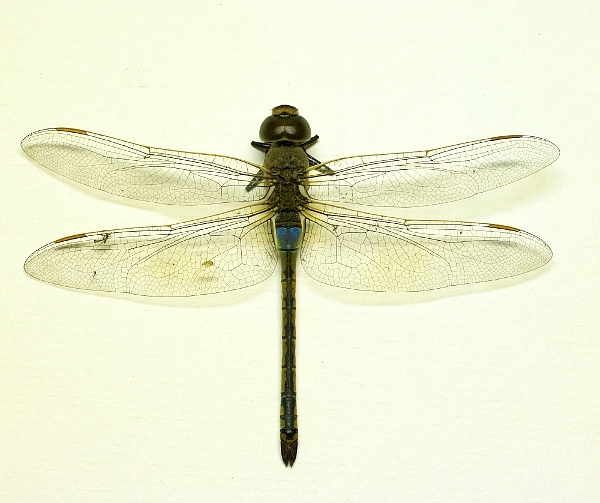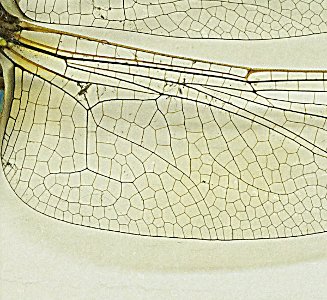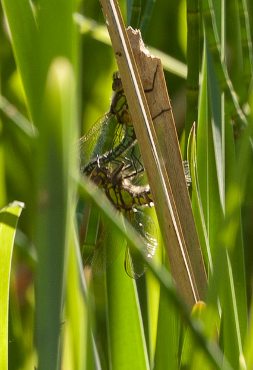|
|||||||||||||||||||||||||||||||||||||||||||||||||||||||||||||||||||||||||||||||||||||||||||||||||||||||||||||||||||||||||||||||||||||||||||||||||||||||||||||||||||||||||||||||||||||||||||||||||||||||||||||||||||||||||||||||||||||||||||||||||||||||||||||||||||||||||||||||||||||||||||||||||||||||||
Warwickshire Dragonfly Group - News page
Table of Earliest Dates for 2011 December 23rd
2011 End of year
round up November 25th
2011 First county record of Vagrant Emperor! November 6th
2011
Late Autumn news August 19th
2011
Alton
Water
field
meeting August 16th 2011
News
and
last
first
flights
of
the
year? July
27th
2011 News
and
comments July 15th
2011 First
county
record
for
Lesser
Emperor
Dragonfly! June 12th 2011
Latest sightings May 29th
2011
Marlcliff
field
meeting May 16th 2011 Another record breaker - Black-tailed Skimmer! May 5th
2011 A
record
breaking
year. April 13th 2011 First Adult of 2011. December 23rd 2011 - End of year round up What a strange year it has been for our breeding species! After receiving what will probably be the last records for 2011 from the Warwickshire recorders, just looking at the first and last flight tables for the year tells a story. After an amazing early start to the flight season, something that was widespread across the country, as the summer progressed the numbers of dragonflies and damselflies fell to a disappointingly low level. This is strikingly illustrated in the late flying table where for the majority of species the last records are several weeks earlier than the record last dates - except for the Common Darter, for that species it is very close to the record. All but one of our proven breeding species were recorded during the year. The worrying exception is the Club-tailed Dragonfly. In spite of a significant effort by several recorders scouring the known breeding sites no sign of the species presence was found. We must hope that we simply missed it and for a better 2012. It is obvious to ask the question why it was such a poor year, the answers are more difficult to find. Perhaps it was a combination of factors: the very early start leading to early exhaustion, the relatively poor weather as the summer progressed and the low level of many of our water bodies after the prolonged dry conditions. Despite the relatively poor showing of breeding species we have had two very exciting county first records for migrant species: the Lesser Emperor in July and the Vagrant Emperor in November. Both records were part a wider influx of the species across the country. Another very interesting observation was the apparent second generation of Red-eyed Damselfly at Coombe Abbey reported on in October. It was of sufficient interest to appear in the "British Wildlife" December issue Wildlife Reports. In the Late Autumn News a request was made for those extras to push the year record count over the 1000 mark. You responded and the final count (so far!) is 1024, (a slightly interesting number - 210). Many thanks to all those of you that have sent in records for 2011. Considering the less than bumper year for dragonflies a worthy count was achieved. Back to page top. Table of Late Flying Dragonflies Below are the latest recorded dates for each species flying in the county this year. If you have any records for late flying dragonflies or damselflies please send them in.
* - new date. Back to page top. Table of Earliest Dates Recorded The table shows the earliest dates adults have been observed this year in Warwickshire.
* - new date. ** - corrected date. If you have any earlier dates for 2011 or earlier times for previous years please let me have them. Back to page top. November 25th 2011 - First county record of the rare Vagrant Emperor dragonfly!
Back to page top. November 6th 2011 - Late Autumn news The table of Late Flying Dragonflies for 2011 shows that most species have disappeared from view quite early. So far the only one reported close to the latest date is Emerald Damselfly. The very early start to the 2011 flight season is being followed by a pretty early end to it. There are still possible later sighting to be made. Common Darter can hang on through quite cool conditions. In 2009 the species was seen in early December. The latest tranche of records has been processed and the distribution maps updated in the atlas. An update was also required to the table of Earliest Dates for 2011, one for an earlier date and one for an error correction. It is safe to say that the flight season is nearly over and the number of records received so far is 996 (this compares with 1283 in 2010 and 1124 in 2009). Only four more are required to reach the thousand! A bit of searching in the field can still get us over that limit and, of course, if anyone has records for the year that have not yet sent that will do the trick too. Back to page top. October 18th 2011 - Autumn news The flight season for dragonflies is approaching its end for this year. In the next few weeks we can expect only few more records of the tough late flying species - just a few days of cold weather will finish it. Looking back it has been a year of contrasts. The very warm second half of the winter, after the cold spell in November and December 2010, followed by an equally unseasonably warm spring resulted in eleven of the twenty-two species recorded flying being earliest ever, see the first flights table. As the summer progressed, the numbers of dragonflies and damselflies at many sites appeared to be lower than in typical years. The relatively poor weather from mid June on may have had its effect on both the dragonflies and observers. The rainfall in the county has been very low for all the year up until now and many smaller pools have dried completely. This will almost certainly impact on numbers of dragonflies next year. Good numbers of individuals were counted on occasions. For example, Jim Timms noted more than 200 Common Blue Damselfly at Bubbenhall on 5th August. Also, rather suprisingly, well over 100 Red-eyed Damselfly were recorded at Coombe Abbey 3rd September by Paul Hodges and Kay & Peter Reeve. A number of Red-eye exuvia were also collected. The date is late for the emergence of this species and the number of adults seen suggest it is the second generation to emerge this year. There have also been widespread sightings of Migrant Hawker in August and September and, notably, more 20 at Wormleighton Reservior on 21st September. Worryingly absent from the list of recorded species this year is Club-tailed Dragonfly. This is not for lack of effort to find it. A number of recorders and on several occasions looked for it where it has been seen regularly since its first county discovery in 1997. One exotic species recorded in the county for the first time this year is Lesser Emperor Dragonfly. The story is recounted below. The number of records received this year is the lowest since 2007 which may well be due to the odd season. But, thank you to all recorders who have sent in records and if you have any more for 2011, or any previous years particularly after 2000, that have not been submitted please email or post them to Peter Reeve at the address below. Back to page top. August 19th 2011 - Alton Water, Suffolk field meeting This meeting was very successful. The target species Willow Emerald Damselfly Lestes viridis was found in good numbers. Ten of us assembled in the car park and were joined by Adrian Parr, who among his other duties is the Suffolk county recorder. We left the car park at 10.45 walking along the path at the reservoir edge and soon began to see Willow Emerald. They were perched on low vegetation some distance from the water, feeding darter fashion and exceedingly cooperative with the photographers and totally unfazed by their close approaches. As the morning proceeded ovipositing pairs, territorial males and copulating pairs were seen in good numbers. All the breeding activity observed was in willow trees over the water at between 1 and 5 metres above the water. Because of where they perform a somewhat different searching technique is required for this species of damselfly than others. After a satisfying morning we returned to the car park for a late lunch. Another ten species were recorded at the Water including Emerald Damselfly L. sponsa which contrasted well with the Willow Emerald. For a more detailed description of the behavior of Willow Emerald observed by Kay and Peter Reeve at the meeting and on the previous and following days, follow this link. A small group continued the day with a visit to the River Gipping near Needham Market but by then the weather had deteriorated, it was cloudy and dull with occasional light rain, but a few species were seen including one addition to the day's count, Banded Demoiselle. Back to page top. August 16th 2011 - News and last first flights of the year? Probably what are the last two species we will see in V.C.38 this year have been added to the first flights table. The first Migrant Hawker of the year was reported by John Harris on the 30th July, quite late for the species to first appear. May be someone has an earlier record for this year? Also, only records of six individuals from, essentially, three sites have been received. Migrant Hawker flies until quite late in the year so we may yet get bigger numbers, particularly if a sizable immigration occurs. The other species that has made an appearance is Small Red-eyed Damselfly. Kay and Peter Reeve have located it at two sites and at both between 10 and 20 individuals were seen, normally on surface vegetation fairly well out from the bank (making patience a requirement for a positive ID!). This continues the trend of smaller populations already remarked on in the species page. One of the sites was a new location for Small Red-eye but it is one that has not been surveyed for more than ten years so the species could well have been there some years. The first flights table is now complete for 2011 - unless something surprising appears. The results show a very unusual year. Of the twenty-two species recorded in the county, eleven show the earliest ever flight date, some very early. For some of the remaining eleven species, first flight records were significantly later than the previous earliest. The very mild weather from January into spring probably explains the dates for the early emerging species but it is not clear what might explain why later emerging species were delayed. Group members were asked what their impressions are regarding numbers of the earlier flying common damselflies this year in Warwickshire. There were five responses and these are summarized below:
The results of this informal poll are clear, the general feeling is that numbers are down or significantly down on the normal averages. This is, of course, not a statistically robust result but none the less it is an interesting anecdotal one. All responses were received on or before 28th July. In the few weeks following this date, the author has recorded Common Blue Damselfly in quite large numbers at a few sites in contrast with the earlier part of the year. Perhaps a more numerous second generation has emerged? Back to page top. July 27th 2011 - News and comments Two more species have been added to the first flights table, one a new species for the county! The table now shows that the exceptional early emergence of many early species has not been sustained as the year has progressed. Indeed, two species that could well be flying now, Migrant Hawker and Small Red-eyed Damselfly, are yet to be reported. Despite several expeditions to find it, Club-tailed Dragonfly is notable by the absence of any records for it this year. Numbers must have been low for it to have evaded detection. We must await in hope for a better 2012 for the Club-tail. Unfortunately, Scarce Chaser was not seen this year either. However, it has a two year life cycle so there may be early instar larvae in the Avon now! Again, we must be hopeful for 2012. Back to page top. July 15th 2011 - First county record for Lesser Emperor Dragonfly! An exciting sighting by Mike Inskip of this rare but increasingly frequent U.K. vagrant - the Lesser Emperor Dragonfly. Mike wrote: "I visited Morton Bagot on the afternoon of July 15th..... As I was walking along a hedgerow close to some small ponds I spotted a Brown Hawker flying towards me. Whist watching it I noticed a second dragonfly which clashed with it briefly. At the same time I saw that it was carrying a white object in its mandibles. Fortunately, it soon landed low down in the vegetation at which point I could see that the white object was some type of Carpet moth. ..... The most obvious and striking feature was a complete blue band across the upper abdomen. This contrasted markedly with the olive brown of the remainder of the abdomen. It was also noticeably that the upper abdomen was narrower/thinner than the rest. The wings were clear and transparent apart from some yellow (not brown) suffusion. After a short time the dragonfly flew off and despite an extensive search ..... it could not be relocated" There have been a number of sighting of Lesser Emperor in the U.K. in the last few weeks including one not that far from V.C. 38 at Belvide Reservoir Staffordshire on the 14th July suggesting it was part of a wider influx. Back to page top. June 12th 2011 - Latest sightings In the four weeks since the last report of sightings in Warwickshire on 16th May six more species have been recorded, see the first flights table. Emperor Dragonfly was recorded at the earliest date for V.C.38 continuing the 2011 trend of early emergence. Notably absent from the species seen is the Club-tailed Dragonfly despite a number recorders looking for it. We must hope that we have just not been on site at the right time and that the no-show is not a symptom of something more sinister. On a more hopeful note, two individuals of Scarce Blue-tailed Damselfly has been spotted at its only known location in the county by Jon Bowley. Jon noted that they were in a new part of the quarry. It is well known that they breed in the early sucessional habitat that developed immediately quarrying ceases. As vegetation get more dense the populations die out unable to sustain themselves. Back to page top. May 29th 2011 - Marlcliff field meeting With optimism not warranted by the weather, ten of set out along the bank of the Avon towards Bidford to try and find, or find signs of, the target species for the day: Club-tailed Dragonfly and the newest species in the county, Scarce Chaser. Despite intensive searching of the bank-side vegetation along the 500 metres we managed before lunch no signs of adults or exuvia for the species were discovered. We were compensated by the sight of very large numbers of Banded Demoiselle sheltering from the wind and dull conditions in the vegetation and by Mark Maddox's spectacular exuvia detection technique. It comprises falling over full length in the reeds and mud and spotting a Banded Demoiselle larval case three inches from his nose. Other species recorded were: Azure, Red-eyed, Large Red, Blue-tailed and White-legged Damselflies. Only the Blue-tailed Damselfly was seen in any numbers and they were significantly less numerous than the Banded Demoiselles. For the habitat and weather conditions the total count was not unreasonable. After lunch the majority of us went to the Welford-on Avon area, some 6 kilometres upstream, in the hope of an improvement in the weather and our luck. In spite of covering more than a kilometre of river bank we did not increase our species count and the number of individual odonates seen was well down on the morning. To cheer ourselves we repaired to the village pub for a pint of excellent local Purity ale. Driving home the cloud broke and the sun appeared - but too late. Back to page top. May 16th 2011 Another record breaker Black-tailed Skimmer. Recorded by Jim Timms at Bubbehall on 6th May. Two individuals were seen. This is eleven days earlier than any previous sighting in the county! Jim recorded a further two on 13th May. The remarkable early emergence of species this year continues. Only the Hairy Dragonfly has not beaten the record for species that have been seen. However, as the first flights table shows, there are some exceptions - notably the Banded Demoiselle which has not yet been recorded two weeks after the previous earliest date. It was recorded on the Severn at Bewdley on 4th May. The suspicion is lack of recorders rather than absence. Back to page top. May 5th 2011
Back to page top. April 26th 2011
Back to page top. The first report of a flying odonate of the year was, as usual, a Large
Red Damselfly. Ron Thomas and Maurice Arnold spotted three
individuals along the bridle way beside Mill Plantation at the RSPB
Middelton Lakes reserve. As the first
flights table shows this is the earliest flight record for the
county by five days. This is well to the north in the county and it might be expected the
first record would occur further south. Perhaps you can beat Ron's and
Maurice's time? Note that there is still room on the larvae ID workshop on Saturday
23rdApril, see the meetings
page. Please send any item for inclusion on the news page to: Peter Reeve, Co-ordinator WDG
Banner artwork by Joan Sharrett
|


